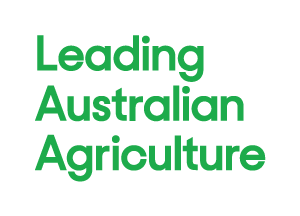THE growing sense of optimism on global markets, highlighted last month, continued through April. Notably, the most recent sharp sell-off in global equities has been reversed, with markets returning to levels prevailing last November. The risk of another calamitous event – like the Lehman Brothers collapse of last September – has receded. Government actions to restore the solvency of the US and European banking systems have been well received to date. Moreover, on the economic front, there are tentative signs that conditions are stabilising at weak levels. For Australian farmers, the downside risks to global agricultural commodity prices have diminished considerably.
“Although the Westpac-NFF Commodity Index – measured in Australian dollar terms – dropped by 3.4% in April that results masks the underlying trend in global prices” said Westpac Senior Agribusiness Economist Andrew Hanlan.
“By removing the currency factor, we can see that agricultural commodity prices have improved. In US dollar terms the Westpac-NFF Commodity Index increased by 3.6% in April, after a 1.7% rise in March. Notably, fibre prices – which were hard hit early – have bounced off their lows. Both wool and cotton prices improved in April. However, overall agricultural prices, in US dollar terms, remain 38% below the peak of March 2008.
“While a level of uncertainty remains in the global economy it appears that the recovery is coming into view. Even in the US, the epicentre of the crisis, there are signs of stabilisation – as noted by Federal Reserve Chairman, Ben Bernanke. The less pessimistic mood of the US consumer reflects this, with sentiment now at the highest level since September 2008.
National Farmers’ Federation (NFF) Vice-President Charles Burke added: “Australian farmers have always said that it is only a matter of time before agricultural commodity again trend upwards.
“The strengthening Australian dollar, while eroding farmer returns, also reflects an improving demand for Australian commodities, including agricultural goods. The strong contribution of agriculture to the national accounts in recent quarterly results is proof of that.
“Let’s hope the sector can continue to grow with the support of better global prices for food and fibre.”
Over April 2009, the Westpac-NFF Commodity Index fell 3.4%. The Index is now 14.7% lower than a year ago. Commodities suffering falls were wheat (-5.5%), beef (-4.1%), dairy (-5.3%), barley (-7.8%) and sugar (-5.2%). Only cotton (7.0%), canola (1.6%), and wool (3.8%) recorded upward price movements.
[ENDS]
The Westpac-NFF Commodity Index is weighted according to the value of Australian agricultural exports and includes only rural commodities – unlike other price indices that are overshadowed by oil, mineral and energy prices. It provides daily movements based on prices of Australia’s eight key farm exports – barley, beef, canola, cotton, dairy, sugar, wheat and wool – in both $US and $A.





Add comment